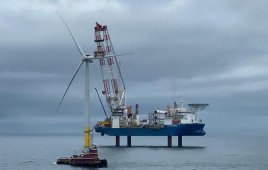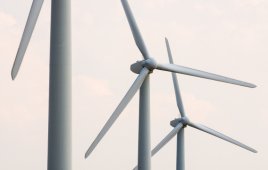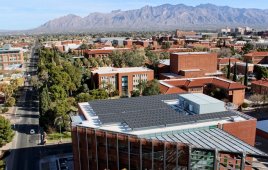This article comes from law firm Stoel Rives LLP and is authored by Greg Jenner, Kevin Pearson, and Adam Schurle.
The IRS recently issued highly anticipated guidance updating the “beginning of construction” requirement for the production tax credit (PTC) under Section 45 of the Internal Revenue Code (the Code) and the investment tax credit (ITC) under Section 48 of the Code. The guidance, contained in Notice 2017-4, updates the IRS’s prior guidance in two significant respects. First, Notice 2017-4 extends in certain cases the placed-in-service date for satisfying the “continuity requirement” for beginning of construction, as recently described in provided in Notice 2016-31. Second, the new notice clarifies that the prohibition against combining methods by which to satisfy the beginning of construction requirement in Notice 2016-31 only applies to facilities the construction of which begins after June 6, 2016.
The IRS’s prior guidance provides that a taxpayer may begin construction by either (1) starting physical work of a significant nature (the “physical work test”) or (2) paying or incurring five percent or more of the total cost of facility (the “5% safe harbor”). Once construction begins, a taxpayer must maintain a continuous program of construction or make continuous efforts toward construction until the facility is placed in service. This requirement is commonly referred to as the “continuous construction” test in the case of projects satisfying the physical work test and as the “continuous efforts” test in the case of projects satisfying the 5% safe harbor. Collectively, these are referred to as the “Continuity Requirement.” In prior guidance the IRS established a safe harbor (referred to as the “Continuity Safe Harbor” in Notice 2016-31) under which the Continuity Requirement would be deemed satisfied with respect to a project if the project were placed in service by a specified date. Notice 2016-31 extended that date, providing generally that if a taxpayer places a facility in service during a calendar year that is no more than four calendar years after the calendar year during which construction began, the facility will be considered to satisfy the Continuity Safe Harbor.
The first significant aspect of Notice 2017-4 is that it modifies the extension provided in Notice 2016-31 by providing that if a taxpayer places a facility in service by the later of (1) a calendar year that is no more than four calendar years after the calendar year during which construction of the facility began or (2) December 31, 2018, the facility will be considered to satisfy the Continuity Safe Harbor. Whereas under Notice 2016-31 facilities on which construction began in 2013 had to be placed in service by December 31, 2017, to satisfy the Continuity Safe Harbor, Notice 2017-4 extends the placed-in-service deadline to December 31, 2018, for such facilities. For example, if construction begins on a facility on January 15, 2013, and the facility is placed in service by December 31, 2018, the facility will be considered to satisfy the Continuity Safe Harbor. Alternatively, if construction begins on a facility on January 15, 2016, and the facility is placed in service by December 31, 2020, the facility will be considered to satisfy the Continuity Safe Harbor.
The second significant aspect of Notice 2017-4 is its clarification that the prohibition against combining methods by which to satisfy the beginning of construction requirement in Notice 2016-31 only applies to facilities the construction of which begins after June 6, 2016. Notice 2016-31 provided that a taxpayer may not rely upon the physical work test and the 5% safe harbor in alternating calendar years to satisfy the beginning of construction requirement or the Continuity Requirement. For example, under the rule of Notice 2016-31, if a taxpayer performs physical work of a significant nature on a facility in 2015, and then pays or incurs five percent or more of the total cost of the facility in 2016, the Continuity Safe Harbor will be applied beginning in 2015, not in 2016. Notice 2017-4 modifies Notice 2016-31 by providing that this rule applies to facilities the construction on which begins after June 6, 2016 (the date on which Notice 2016-31 was published).
This is a very significant development for some renewable energy projects, and may allow taxpayers to “refresh” the beginning of construction date on a facility on which physical work was performed on or before June 6, 2016, by satisfying the 5% safe harbor test in a later year (or vice versa). However, the new guidance does not allow a taxpayer to “refresh” a beginning of construction date by performing physical work of a significant nature if the taxpayer first met the beginning of construction requirement by satisfying the physical work test in a prior year.
Finally, Notice 2017-4 also clarifies certain questions regarding the computation of the 5% safe harbor for retrofitted facilities. In particular, the new guidance provides that for purposes of the 80/20 rule, pursuant to which a facility that contains some used property will qualify as originally placed in service if the fair market value of used property is not more than 20% of the facility’s total value, the cost of new property includes all costs property included in the depreciable basis of the new property.
Filed Under: Financing, Policy





